I'm going to hit a couple of highlights about eggs here-but this article is not intended to be comprehensive regarding breeding or incubation. Feel free to post questions.
Are your eggs fertile?
Question: If you have raised your female since she was a baby and she has always lived alone but then you come home one day to find an egg in her cage, did a crested gecko Don Juan sneak into her cage?
Nope. Geckos lay infertile eggs just like chickens and other egg laying species. The females can start laying anytime after 25 grams and should be provided a nest box so that they can lay in there if they want to. Many won't lay infertile eggs in a nest box. They lay them on the substrate instead. But giving the gecko the option keeps her from holding on to the eggs and becoming egg bound.
Question: If your female is living with a male can she become gravid even if she isn't 40 grams yet?
Yes. You should separate males and females as soon as the males 'drop'. Many people recommend having them live separately from the time they show pores.
Question: My female may have lived with a male at the pet store/breeders/my friends house but I don't have a male and she has lived alone for the last 8 months. Could her eggs be fertile?
Yes. Females can retain sperm for a year. So even though she hasn't been with a male on your watch, she could still lay fertile eggs if she was bred previously.
Question: How do I know if the eggs are fertile?
Candle them. This term is a holdover from the days when candles were used for light, but today it simply means holding the egg in front of a light source in an otherwise dim room. The easiest light source to use is an LED pen light flashlight. Hold the egg in front of it and look for a red ring that can encompass 1/4-1/3 of the top of the egg. If the egg is yellow all the way through with no red spots, veining or ring then chances are it isn't fertile. But incubate it a week and check it again because sometimes it takes a little time to develop.
I prefer to wash my eggs so I can candle them and see how the shell is doing. I just rinse them off with cool water and rub the dirt off lightly with my fingers to get them clean. They will be slippery so be careful.
After washing I place them in a container with a moist hatching medium. You can use deli cups, GEO's, craft containers or any container with a lid that won't let too much air in/moisture out. If I am placing the eggs right on the medium then I dig a shallow hole and nestle the eggs in so that they won't roll around. Place them with your marked side up. They can be side by side or in individual compartments. I haven't found that it matters. If your container is air-tight you might want to poke some very small holes in it or open it once a week for some circulation.
If they come out white and then start turning brown though chances are they are going bad. It is still worth incubating since it can be hard to tell sometimes if an egg has truly gone bad-if it is growing then it still has a chance of hatching. In the picture above the eggs were collected in the same 2 week period. The eggs that are starting to sink and turn brown are going bad. The eggs with the brown speckling however are still viable. The eggs on the left that are dented and fuzzy were most likely infertile to begin with.
Denting is not always a sign of an egg going bad. It could be that your nest box was dry or that your female laid outside of the nest box. That type of denting is due to a lack of moisture and the egg is drying out. Wash the egg off and place it into a humid incubating box and it has a chance of recovery. If your incubating medium is too dry the same thing will happen. Add water but add it as far away from the eggs as possible.
Sometimes too much water can be just as harmful as too little and humidity changes can be an issue with viability. Try to keep your humidity level inside the incubator as steady as possible. Temperatures can vary a bit-cool at night with a natural steady rise during the day is fine and mimics natural conditions. But sudden temp spikes should be avoided and can kill a batch of eggs.
Eggs that were poorly calcified might swell early because they are absorbing a lot of water through the shell. This can delay the growth of the hatchling and cause a longer incubation time. A poorly calcified egg also tends to be more leathery and more difficult for the hatchling to get out of. Watch this type of egg closely in the 2 weeks before you expect it to hatch (hatching time is based on temperature for crested geckos) to make sure that the baby hasn't slit the egg. Once it does you may want to help it out, but that is an individual choice. A healthy egg and hatchling rarely need this kind of intervention so I don't personally intervene with normal eggs that don't hatch. However a hatchling might be perfectly healthy and still not be able to get out of and egg that is tough and leathery egg due to poor calcification.
Your incubation time will vary depending on your temperatures. Eggs can be incubated from 65-78 degrees. Most people stay in the 68-75 degree range. At the lower temps you might have as long as 130 days of incubation. At the top of the range you can have as few as 65 days. There is some evidence to suggest that staying over 80 days creates a better crest and tail structure. If your goal is to incubate for 75 days or longer your temps will need to be 75 degrees and under at the hottest part of the day.
Once your babies hatch they will need a small enclosure with hides and humidity so they can complete their first shed. Have a small Kritter Keeper or tall deli cup nearby with greenery and paper towels all ready to go. Beware though-the little hatchers are given one survival skill at birth. They are tricky. They hold very still to fool you into thinking they are dead. Then when you touch them they take off like rockets into the smallest, most awkward spot they can find. Best of luck with your hatchlings!
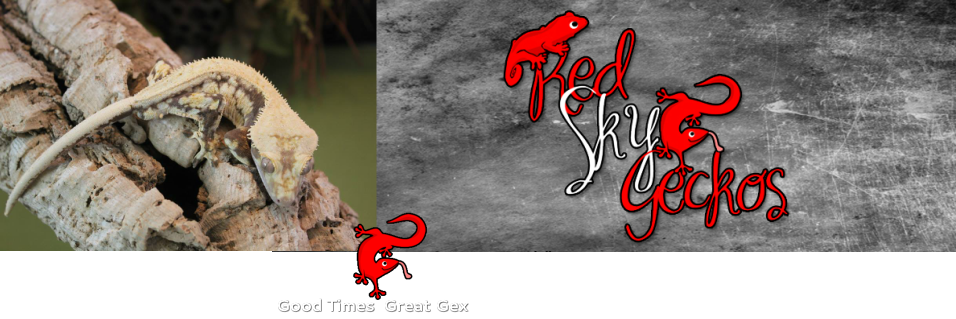
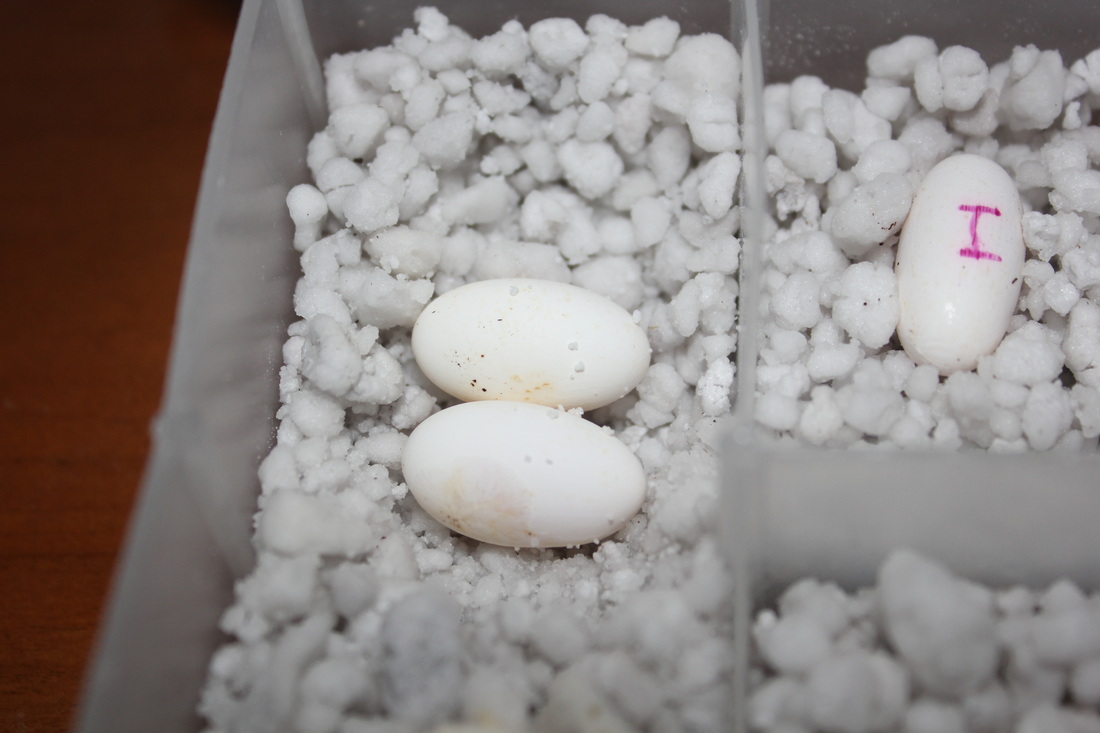
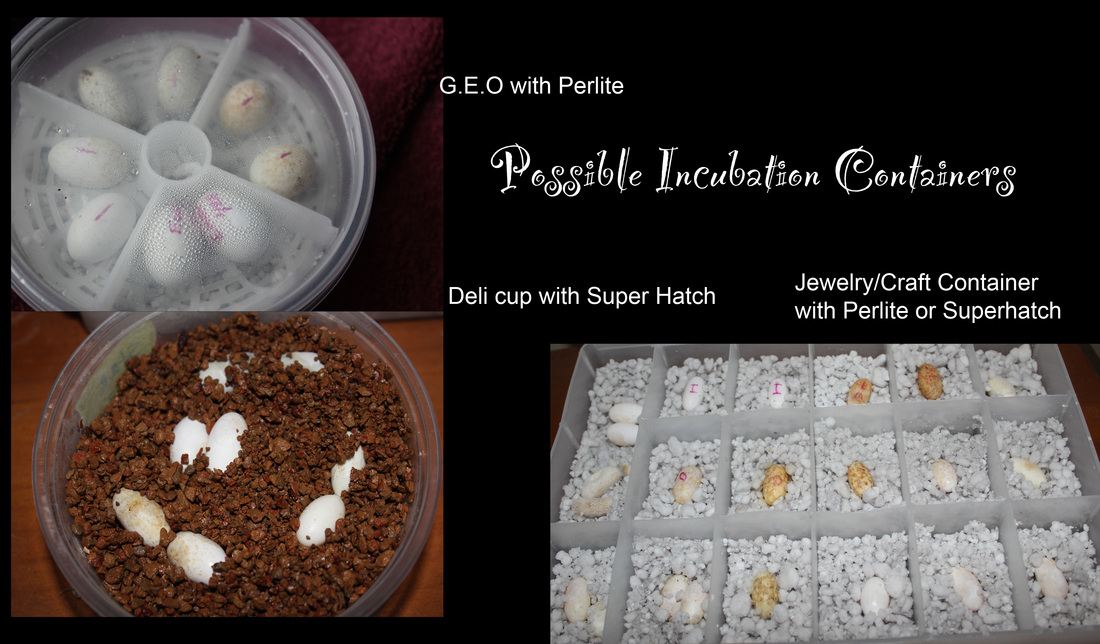
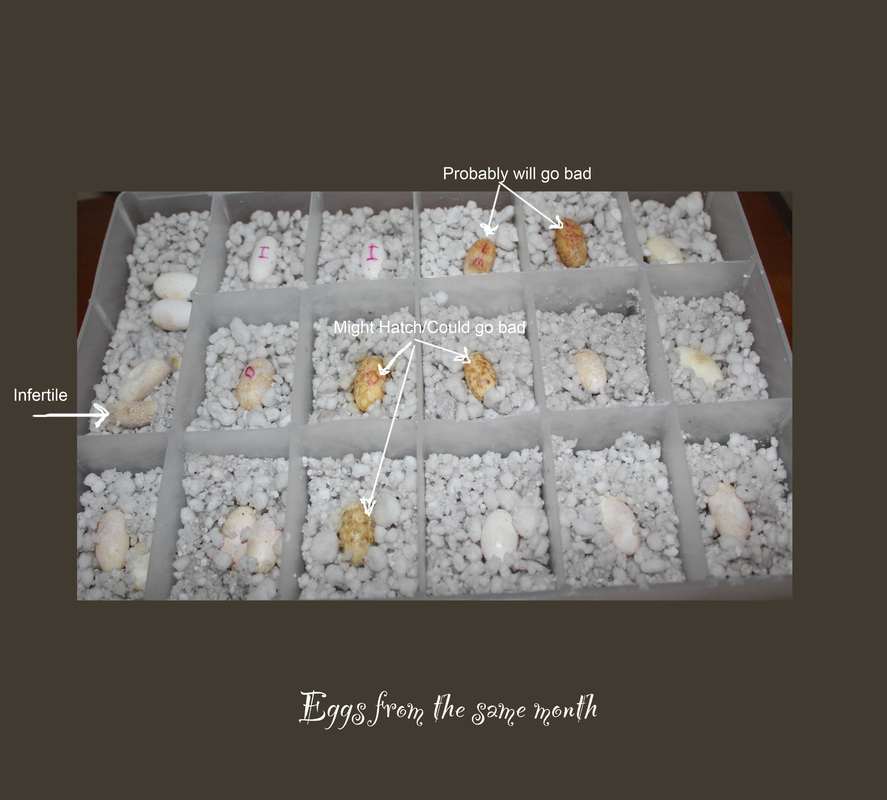
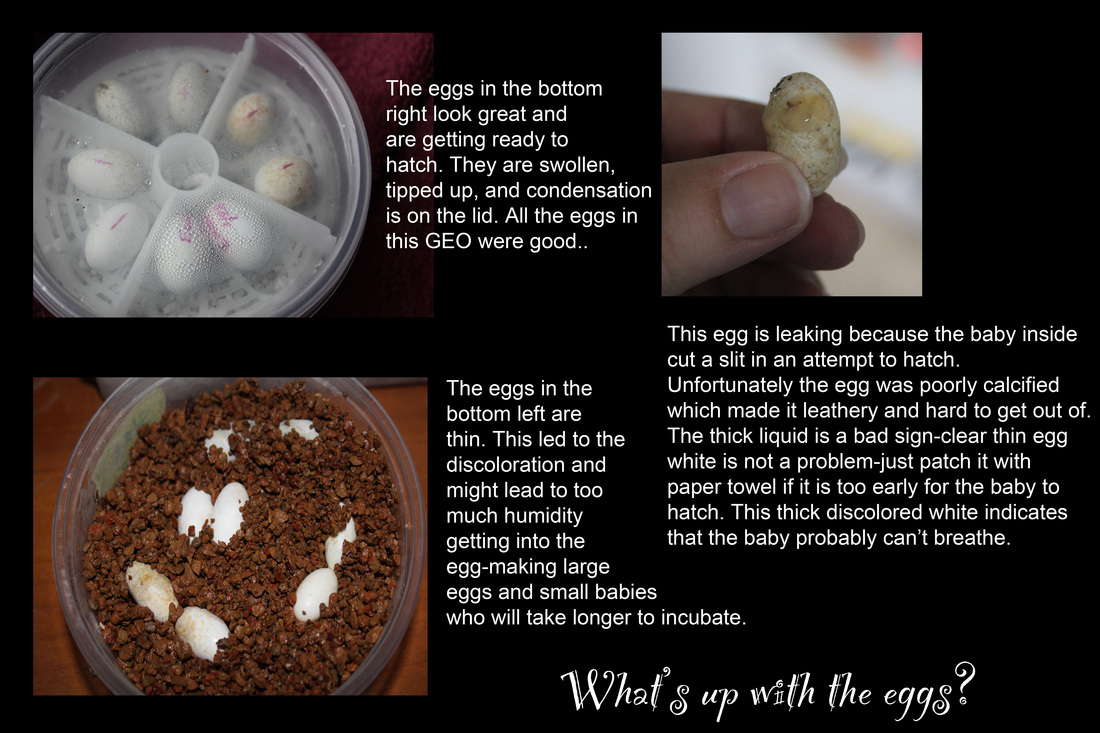
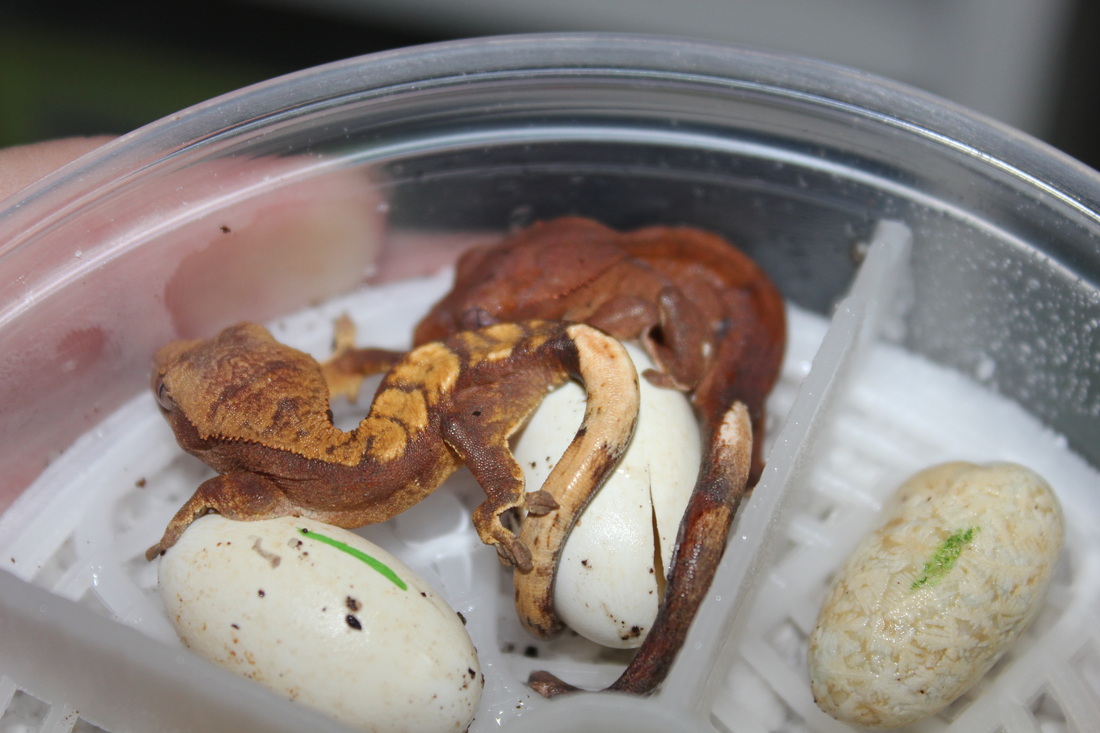
 RSS Feed
RSS Feed